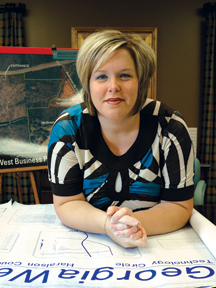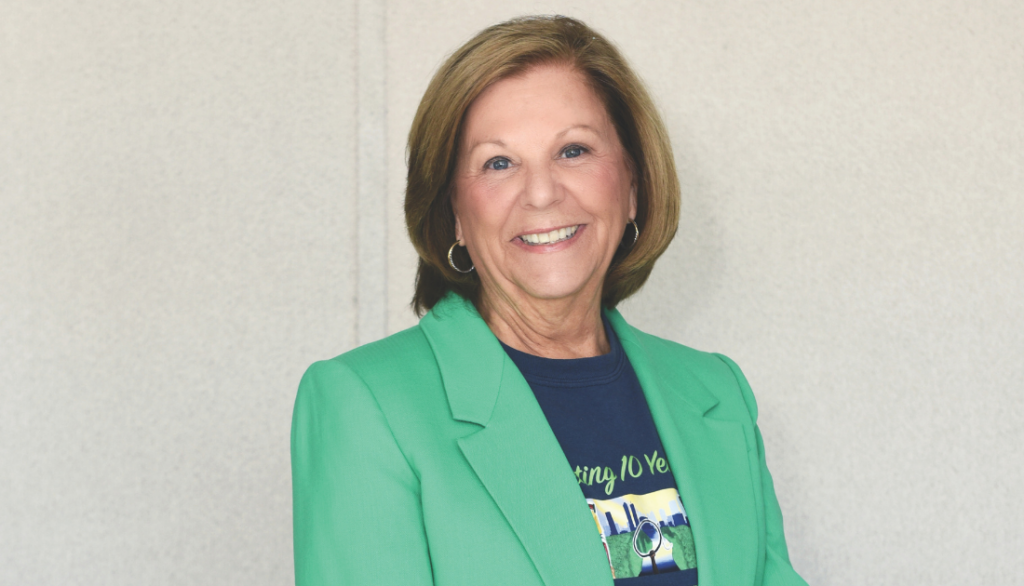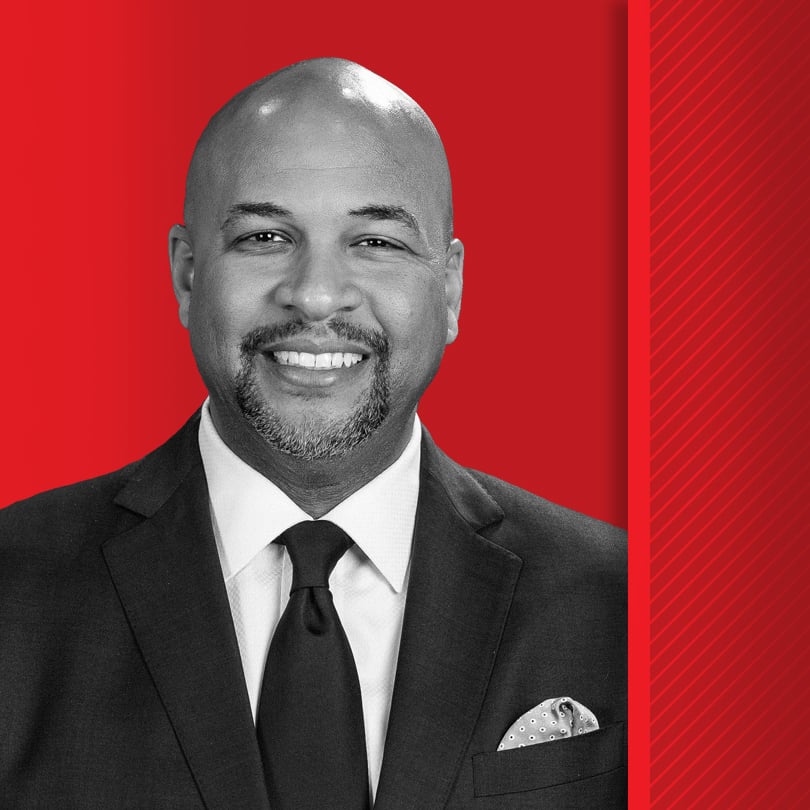Haralson County: Shifting Into High Gear
Auto parts industry transforms rural area

Perched on Georgia’s western border, Haralson County is taking a slow, measured approach to bedroom growth seeping its way from both Atlanta and Birmingham. With an eye toward maintaining what County Commission Chair Allen Poole calls its “rural integrity,” this community now stands poised to take off with a booming auto-parts industry.
Four distinct cities with rich history and unspoiled beauty are connected grid-style and the county is traversed by Interstate 20 and Highway 27, forming the “ABC” triangle with Chattanooga. As it grows as a commuter hub, Haralson is taking a regional approach to challenges necessitated by big new developments.
West Central Technical College (WCTC), which has 900 students at its Waco campus, is about to grow in enrollment by 2,000 to 7,000 as it consolidates with West Georgia Technical College. This was announced after Honda Precision Parts of Georgia located in Tallapoosa partly based on WCTC’s proximity. Honda now employs 400 from a five-county region, including border counties in Alabama; many of those employees were trained at WCTC.
In addition, a 250-acre tract of land that is zoned industrial and is infrastructure-ready is located behind the Honda plant. The Haralson County Development Authority also recently brought Suzukaku, which manufactures ATV parts for Yamaha’s plant in Newnan, into the new GeorgiaWest industrial park, a public-private, 180-acre site off Highway 27, which has been widened to four lanes. Conse-quently, Haralson is primed to become an employer hub as well.
Entrepreneurial Strategies
The industrial boom has brought ancillary business growth along with it. Jennie English has seen membership rise in the Haralson County Chamber of Commerce, where she has served as president since 2003. Working with the Haralson County Development Authority, she’s proven adept at pursuing strategies that will boost local businesses.
“We received Entrepreneur Friendly designation from the state, which is setting in motion initiatives that are beginning to galvanize our small business community,” English says. “Ninety-two percent of our businesses are ‘micro,’ with five or less employees.”
In addition, Appalachian Community Enterprises, a nonprofit micro lender based in Cleveland, Ga., received a $99,999 Rural Business Enterprise Grant from the USDA, which it will use to establish a revolving loan fund for small Haralson County businesses. “We believe that this can help strengthen our local base of small entrepreneurial business,” English says.
Population is keeping pace with the business community. Poole says the county has grown by approximately 4,000 residents since the 2000 census – an average of 500 people a year and an easy pace that is expected to continue. Still, Haralson has made progressive investments that place it ahead of the game. In late September, the county closed on 700-plus acres for a reservoir that could provide up to 3 million gallons of water a day. Plans call for a ground breaking in the next couple of years. (A larger lake, known as the “Devil’s Kitchen” reservoir, is adjacent. “This property is a smaller lake but in a deeper gorge, so capacity will be the same,” Poole says.)
With buy-in from all four cities, as well as the county commission and water authority, it’s truly “more for all or less for none,” Poole says. “It takes all of us working together to try to pull these projects along.”
Buy Local
Honda Precision Parts of Georgia opened its 450-acre, $100 million plant in 2005; Suzukaku could create up to 50 jobs at GeorgiaWest. Honda Lock America in Bremen celebrates its 10th anniversary this year, and more auto parts dealers are expected to cluster in West Georgia as the Kia plant in West Point comes online. Tallapoosa’s second industrial site, that additional 250 acres behind the existing Honda plant, could connect Honda’s access road to I-20, which is quite a bargaining tool. In short, there’s lots of room for industrial growth here, and an equal determination not to get rolled over in the growth process.
“It’s given us a positive self image,” Tallapoosa City Manager Philip Eidson says of Honda Precision Parts. “We had some layoffs and downsizings [the closing of Ball Corp. will eliminate some 200 jobs by the end of the year], so in terms of employment, Honda took up the slack. But the magnitude and the quality of the project really gave us a much higher visibility, and that goes for the whole region, from Alabama to Chattanooga. For Automotive Alley, the market is open.”
As the new companies draw employees from around the region, just 54 percent of Haralson’s workforce commutes outside the county, which is impressive for a county on an interstate within 45 minutes of Atlanta. Still, leaders realize the balance could easily shift without concerted efforts to grow the local economy.
“It may sound corny but it’s real,” says English of the chamber’s “Team Haralson” campaign. “We’re trying to teach people that economic development is everyone’s responsibility.” The chamber used its Entrepreneur Friendly Implementa-tion Fund grant monies to create a Buy Local and Buy Chamber shopping and services guide. It also developed the EFIT (Entrepreneur Friendly Implementation Team). With about 25 members representing small businesses/entrepreneurs, finance, government, education, healthcare, etc., this team is implementing a community-wide education campaign, getting the word out to the entire county about the importance of shopping locally. One focus of the program is helping students understand how economic and community development work, and how shopping locally brings in revenues that improve the area.
“We call it neighbor supporting neighbor,” English says. “There’s a lot of excitement around it, and a real impact.” The Buy Local and Buy Chamber campaign also rolled out an infomercial at the chamber’s annual meeting last year featuring local stores and local actors encouraging shoppers to look in their home community for goods.
Bold Thinking
The local buy-in effort complements the county and cities’ planning strategies. The four cities are in various stages of implementing zoning and upgrading building standards, and the county just revised its comprehensive land use plan three years ago. “We’re trying to create a “spiderweb” of infrastructure from the cities outward into county,” says Poole, adding that most growth is pushing outward from Bremen and Tallapoosa and from the I-20 corridor.
The chamber and development authority also are addressing social problems such as adult literacy. West Central Technical College provides free space for the county’s “Learning Always Means Progress” adult literacy classes, supervised by Betty Candler. “Literacy is a cause that is near and dear to my heart,” says WCTC Vice President for Institutional Advancement Dawn Cook.
All four downtowns are working to improve their city centers with streetscapes grants and other incentive efforts to boost local tourism. Quality of life is something everyone passionately wants to protect; it was a key draw for Don Whitney, who founded Tallapoosa’s World Children’s Center, a massive $350 million project to provide a home for orphans and neglected children scheduled to open in March (see story, page 92). He’s also assembled a blue-ribbon team of 60 local leaders to create his own Community Visioning Process.
Bremen City Manager Perry Hicks is proud to have reduced the city’s general fund budget by 1.4 percent, while investing in new infrastructure to support future growth. “We’re implementing higher development and more stringent construction standards, and a more rigid review and inspections. We also have increased the requirement for buffers and landscaping,” he says. “We have an old infrastructure we’re using Special Purpose Local Option Sales Taxes [SPLOSTs] to update.”
“We’re in a season of unprecedented growth, mostly due to the quality of our school system in addition to our location,” says Bremen Mayor Sharon Sewell. The city of 5,500 is seeing some retail growth accompanying the residential spurt to its east, including a new Walgreen’s downtown.
“We’re a rural county with changing demographics. Our chamber has helped us make a paradigm shift. With the western movement of growth, we have to think differently, more regionally – and we take the lead, being in both Carroll and Haralson counties,” Sewell says.
She adds that the city had declined from the offshoring of its textile industry over the last 20 years to the extent that six years ago it was on the verge of bankruptcy. “We had a well-fortified city and nearly lost it because of bad paradigms. We’ve also struggled with literacy, low economic status, and the low-income mindset of victimization. Now we have more potential than any city in Georgia or the Southeast,” she says.
Sewell is a bold thinker – she points to Bremen’s proximity to Hartsfield-Jackson International Airport, two federal highways, the interstate, the West Georgia Regional Airport, and the railroad as great draws for growth. “We’re clustered with resources and potential no one can touch,” she says. “The other exurbs are all filled up.”
Tallapoosa, which has a concentration of culture in its unusual multiple-square downtown layout, is pushing commercial and retail growth. The city is expanding its library by 1,200 square feet and converting an old high school into a civic center with 450-seat auditorium and classrooms.
Another community located near I-20, Waco has become a magnet for local investment with the new Waco Industrial Park. Joey Meeks, president of Georgia Pipe and Precast in Dallas, found 77 acres in the city and decided to build a new plant here instead of Dallas (where he was out of room), in order to be closer to where he lived. He got more than he bargained for, and went for it.
“We didn’t need that much land, but we kept 30 acres to develop the rest as a park,” he says. Meeks has decided to break it into smaller three- to five-acre lots to support small businesses like his own. “I remember how hard it was for us to find a three-acre lot,” he says. His plan, which is zoned I-2, even incorporates “Waco Commons,” a retail area on the front of the park. “There were no negative comments whatsoever about it [from the community],” Meeks says.
English agrees that the location of the Waco Industrial Park on Highway 78, with its close proximity to Highway 27, is excellent. The smaller lot sizes are a good fit for startups and EFIT, as the county works to grow and retain small companies.
And when it comes to the larger issue of drawing in new industries and creating new jobs for the community, “Nothing helps the economy of a community like payroll dollars,” notes Waco Mayor Travis Prichard.
Training and Retaining
Waco also is home to WCTC, which has seen a 19 percent increase in enrollment in the last year. “Today we have 4,100 students,” Cook says. “Students of Alabama border counties don’t have to pay out of state tuition, and 29 percent of our high school graduates plan to attend. It’s a national trend – our average age has dropped to 27, and 80 percent of today’s jobs will require technical training.”
The area’s auto parts companies are working in tandem with WCTC to create a 21st century workforce. “Dual enrollment is extremely important to west Georgia,” says Cook of the program that lets high school students take classes at tech schools, and which has been threatened recently by the state’s budget crisis.
“It gives students a jump start on secondary education, and more options when they graduate. It also boosts high school graduation rates, and supports the local economy. We have a 98.6 percent placement rate, and many of our students do live, work and play here in west Georgia.”
WCTC’s merger with West Georgia Technical College in July 2009 will create big opportunities for the institution, which has campuses at Carrollton, Douglas, and Coweta in addition to Haralson. “We will remain student centered,” Cook says. “The consolidation gives our students at both colleges more options. We’re very excited about it.”
Not all education news is rosy, though. In late fall, a Southern Association of Colleges and Schools (SACS) special review team recommended that all Haralson county schools remain on probation until May 2009 (the schools have been on probation since 2005) unless several conditions having to do with board policies are met. Should the board fail to meet those terms, schools may lose their SACS accreditation.
Handling Growth
The county seat, Buchanan, has bigger challenges and fewer revenue sources than other cities. In an effort to accommodate more neighborhoods and industry, it is undergoing its first comprehensive planning and development effort. “It’s way past time for it,” says Mayor Benjamin “Buster” Biggers. “We’re at capacity in terms of service and need to secure our infrastructure before we grow.”
The county has tourism potential to build on, with a library in the historic courthouse on the square. “The old courthouse is beautiful,” says City Clerk Karen Bates King. She wants to preserve the history, but hopes one day the square will be full of shops and vendors.
There are enough amenities and subdivisions just outside the city limits, such as the new County Recreation Center (a $3 million SPLOST investment into a 53-acre complex incorporating football field, walking trails, a double floor gym, three soccer fields and a senior center), to support the city’s quality of life.
Now leaders are looking to a SPLOST to boost the city’s tax coffers. “We’re seeing a trickle (of growth),” says King. But with the SPLOST on the ballot next year, Buchanan has a lot at stake. “It is critical to Buchanan and to Haralson that it pass.”
Many leaders speak of a “pause” that actually could help put them ahead of potentially radical change. “The growth has slowed just a little bit, but people are still moving out to get away from the big city hustle,” Poole says. “Projections say that we will increase to about 35,000 in next five years. But the growth we’re looking for is retail and manufacturing, to keep down the home building side because it costs so much more.”
Haralson, like other west Georgia counties with roots in the state’s rural past, has benefited from slow growth without harboring any illusions over whether change is coming.
Leaders are focusing on cooperation, from chamber-sponsored monthly professional roundtables, which allow business leaders in different fields to meet and discuss common challenges, to pooling resources at the government level to increase the water supply.
“During this downtime, a community either plans or does nothing, “ says Tara Chapman development authority executive director. “We have decided to plan.”
“This current economic crisis will make us all better businessmen,” Hicks adds.
Haralson County
At-A-Glance
Population
Haralson County, 29,124; Bremen, 5,805; Tallapoosa, 2,986; Buchanan, 1,059;
Waco, 541
Unemployment
(September 2008)
Haralson County, 6.7 percent; Georgia, 6.6 percent
Per Capita Income
$37,227
Top Five Manufacturing Employers
Honda Lock, 531; Honda Precision Parts of Georgia, 423; Wayne Davis Concrete, 203; Stoffel Seals Corp., 142;
Berry Plastics, 126
Sources
Georgia Department of Labor, Haralson County Development Authority






